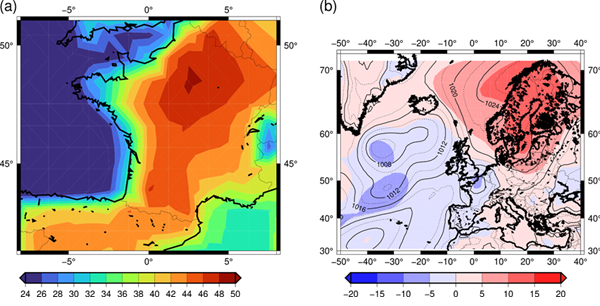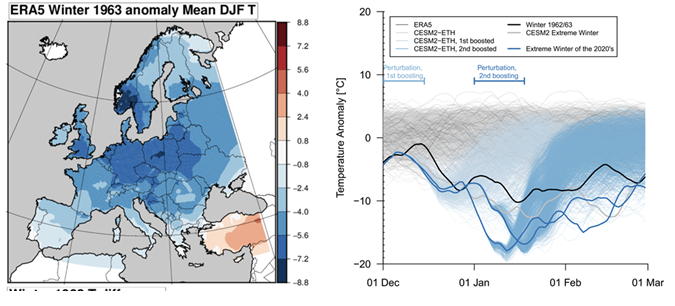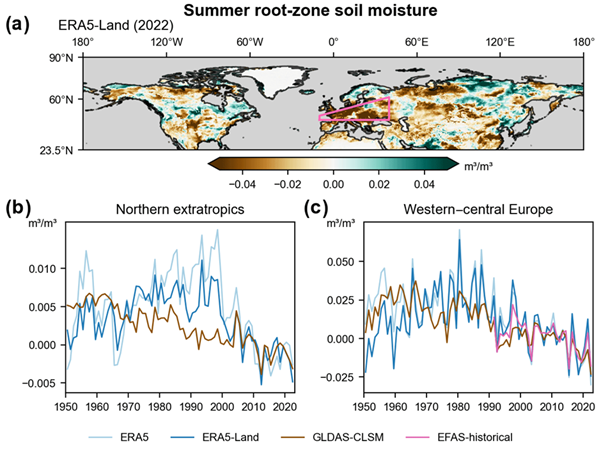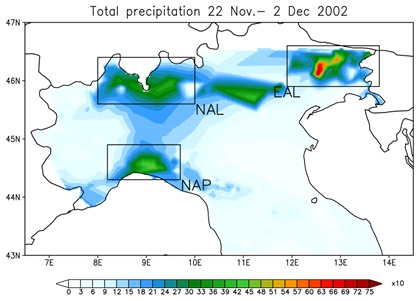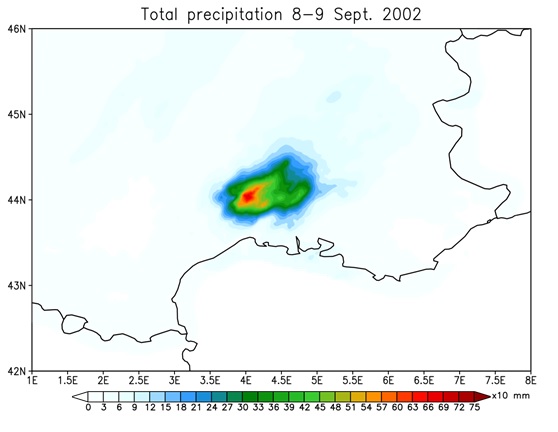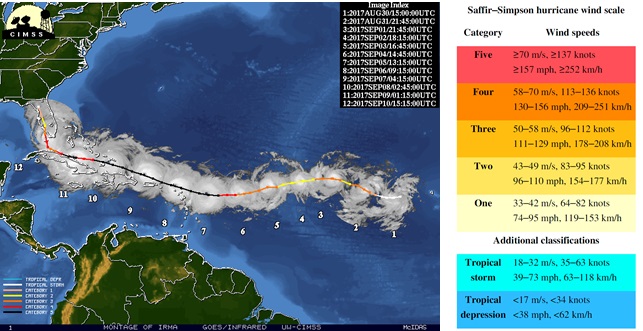2021 PACIFIC NORTH AMERICA HEATWAVE
During the last days of July 2021 a region in the Northwestern US and southwestern Canada experienced temperatures that have never been previously observed in this region, with records broken in many places by several degrees (Philip et al. 2021). A new all-time Canadian temperature record of 49.6°C was set in the town of Lytton, British Columbia. The same town was strongly affected and partly destroyed by one of the severe wildfires that occurred during and after the heatwave. The Pacific Northwest heatwave further contributed to a sharp increase in heat-related excess mortality. The Pacific Northwest heat wave is one of a series of record-shattering heat extremes that, based on the previous observational record, may have been deemed impossible.
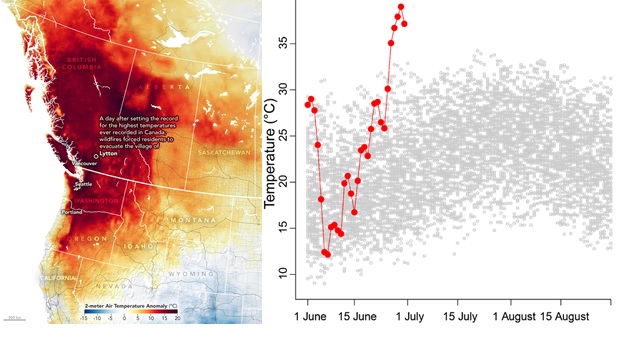
Figure1: (left) Temperature anomalies during the 2021 Pacific Northwest heatwave (NASA 2021) and (right) area-average temperatures in 2021 (red) compared to the period 1950-2020 (grey dots) in ERA5 reanalysis (plot by Erich Fischer).
Event definition
XAIDA defines the event intensity as the temperature anomaly averaged over the region (45–52 ºN, 119–123 ºW) used in Philip et al. (2021) including the cities of Seattle, Portland, and Vancouver (with well over 9 million people in their combined metropolitan areas). Different event durations from 1-day to 5-day temperature anomalies are analyzed.
Objectives
XAIDA aims at improving the understanding of the driving physical mechanisms of this event, at putting the event into a long-term climatological context and at quantifying to what extent human activities have altered the odds of the Pacific Northwest heatwave to occur. Finally, XAIDA addresses the question whether the potential for such a record breaking event could have been foreseen before the event.
In a workshop in early February 2022 co-organized by WP5 and WP6 participants shared their initial results on the above objectives and co-ordinated future tasks in addressing research questions. The workshop helps to coordinate the use of a common event definition for future work.
WP6 presented a detailed analysis of the processes driving the Pacific Northwest heatwave. The event was driven by an intense anticyclone situated over the heatwave region. A detailed analysis revealed the pathways along which the air masses moved towards the center of the heat anomaly, and quantified the process along these trajectories to the extremely hot air masses that ultimately reached the heatwave region.
WP5 presented initial analyses demonstrating that in principle the possibility for such an event could have been foreseen based on statistical methods and targeted climate model-based experiments. The statistical analysis of the event is based on a weather generator that resamples extreme states (“empirical importance sampling”), and the climate model experiments are designed to repeatedly simulate a specific extreme event with slightly perturbed initial conditions (“climate model boosting”) to generate different trajectories of this extreme event.
Based on these findings WP5 aims to develop storylines for other record breaking heatwave events unseen in the observational record that have not yet occured. WP5 coordinates the definition of potentially impact-relevant other heatwave events e.g. for the 2024 Summer Olympics in Paris for which heatwave storylines are developed comparing different approaches developed within the XAIDA project.
Study results
In terms of importance sampling methods to generate ensembles of unseen events, we used two approaches in parallel: ensemble boosting and analog Stochastic Weather Generators (SWG) with importance sampling.
Fischer et al (2023) show how ensemble boosting, an advanced method based on dedicated Earth System Model experiments, can create realistic scenarios of a heatwave even more intense than the one recently observed in the Pacific Northwest. They also highlight that much stronger heatwaves than ever recorded could happen in other areas, such as the Greater Chicago and Paris regions.
Gao et al. (2024) analyzed the physical mechanisms in the boosted ensemble members calculating the role of adiabatic and diabatic heating along the trajectories leading towards the highest temperature anomalies. It was shown that the contribution of different dynamical drivers such as the crucial role of an upstream warm conveyor belt, strong adiabatic compression through subsidence and diabatic heating in the boundary layer were remarkably similar in the free-running climate model simulations and reanalysis. Finally, the thesis demonstrated that subtle differences in diabatic heating from dry soils, topographic effects, and enhanced diabatic heating were the key differences between more moderately intense and extremely intense heatwaves in the climate model experiment.
Pons et al (2024) used a special tool called a stochastic weather generator with a method called “empirical importance sampling”. This tool creates simulations of extreme temperature patterns based on similar atmospheric conditions (« circulation analogues »). These analogues were selected by focusing on the daily maximum temperature in the area most affected by the heatwave. The findings show that some of the key large-scale factors that caused the heatwave can be identified using these circulation analogues, even though the weather generator doesn’t directly include this information in its setup.
Zeder et al (2023) showed that we should be careful in reporting return levels with statistical models for record shattering events. High return levels (extreme temperatures that occur rarely) are often underestimated when based on short historical data. As a result, the likelihood of rare heatwaves is incorrectly judged to be lower than it actually is. These errors have become even more significant in recent years because climate change has had a strong and noticeable impact.
Conclusion
Although rapid analyses on record shattering heatwaves can give initial insights on the influence of climate change on the event, it is very useful to gain more understanding on the processes driving such heatwaves. The empirical importance sampling and ensemble boosting methods are well suitable to test whether such record shattering or even unseen events could happen in the (near) future, either in the Pacific Northwest or in other regions.
References
Fischer, E.M., Beyerle, U., Bloin-Wibe, L., et al. (2023): Storylines for unprecedented heatwaves based on ensemble boosting. Nat Commun 14, 4643. https://doi.org/10.1038/s41467-023-40112-4
Gao Y., Röthlisberger M., and Fischer E. M.: “Understanding and quantifying the factors determining potential worst-case heat anomalies”, Master Thesis, ETH Zurich (2024) https://doi.org/10.3929/ethz-b-000671877
Pons, F., Yiou, P., Jézéquel A., Messori G., 2024: Simulating the Western North America heatwave of 2021 with analogue importance sampling, Weather and Climate Extremes, 43, 100651, https://doi.org/10.1016/j.wace.2024.100651.
Philip, S. Y., Kew, S. F., van Oldenborgh, G. J., Anslow, F. S., Seneviratne, S. I., Vautard, R., Coumou, D., Ebi, K. L., Arrighi, J., Singh, R., van Aalst, M., Pereira Marghidan, C., Wehner, M., Yang, W., Li, S., Schumacher, D. L., Hauser, M., Bonnet, R., Luu, L. N., Lehner, F., Gillett, N., Tradowsky, J. S., Vecchi, G. A., Rodell, C., Stull, R. B., Howard, R. and Otto, F. E. L., 2022, Rapid attribution analysis of the extraordinary heat wave on the Pacific coast of the US and Canada in June 2021, Earth Syst. Dynam., 13, 1689-1713, https://doi.org/10.5194/esd-13-1689-2022
Schumacher, D. L., Hauser, M., Seneviratne, S. I. (2022): Drivers and Mechanisms of the 2021 Pacific Northwest Heatwave. Earth’s Future, 10, e2022EF002967. https://doi.org/10.1029/2022EF002967
White, R.H., Anderson, S., Booth, J.F. et al. The unprecedented Pacific Northwest heatwave of June 2021. Nat Commun 14, 727 (2023). https://doi.org/10.1038/s41467-023-36289-3
Zeder, J., Sippel, S., Pasche, O. C., Engelke, S., & Fischer, E. M. (2023). The effect of a short observational record on the statistics of temperature extremes. Geophysical Research Letters, 50, e2023GL104090. https://doi.org/10.1029/2023GL104090
 This project has received funding from the European Union’s Horizon 2020 research and innovation programme under grant agreement No 101003469.
This project has received funding from the European Union’s Horizon 2020 research and innovation programme under grant agreement No 101003469.

